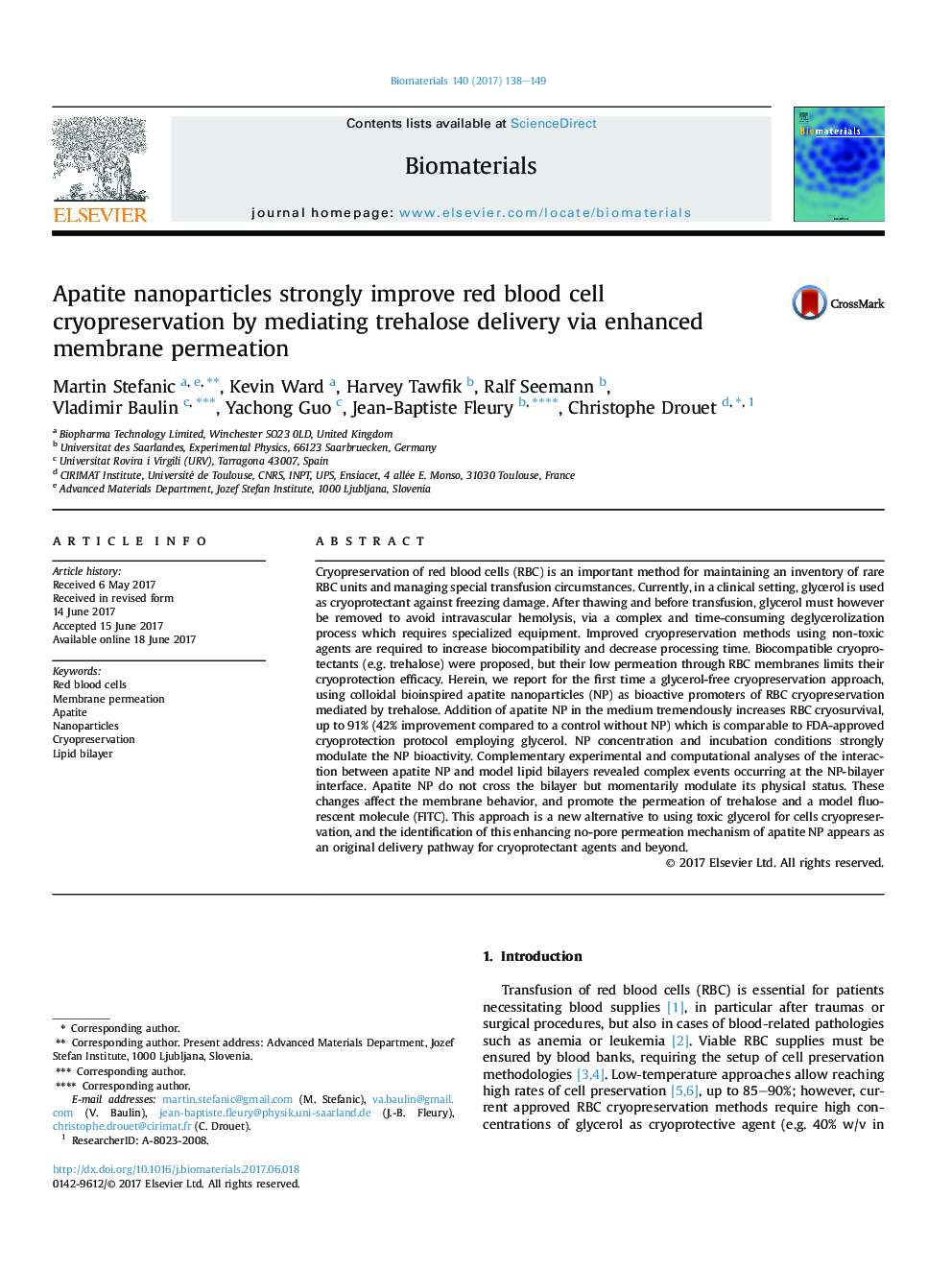| کد مقاله | کد نشریه | سال انتشار | مقاله انگلیسی | نسخه تمام متن |
|---|---|---|---|---|
| 6450576 | 1416127 | 2017 | 12 صفحه PDF | دانلود رایگان |
Cryopreservation of red blood cells (RBC) is an important method for maintaining an inventory of rare RBC units and managing special transfusion circumstances. Currently, in a clinical setting, glycerol is used as cryoprotectant against freezing damage. After thawing and before transfusion, glycerol must however be removed to avoid intravascular hemolysis, via a complex and time-consuming deglycerolization process which requires specialized equipment. Improved cryopreservation methods using non-toxic agents are required to increase biocompatibility and decrease processing time. Biocompatible cryoprotectants (e.g. trehalose) were proposed, but their low permeation through RBC membranes limits their cryoprotection efficacy. Herein, we report for the first time a glycerol-free cryopreservation approach, using colloidal bioinspired apatite nanoparticles (NP) as bioactive promoters of RBC cryopreservation mediated by trehalose. Addition of apatite NP in the medium tremendously increases RBC cryosurvival, up to 91% (42% improvement compared to a control without NP) which is comparable to FDA-approved cryoprotection protocol employing glycerol. NP concentration and incubation conditions strongly modulate the NP bioactivity. Complementary experimental and computational analyses of the interaction between apatite NP and model lipid bilayers revealed complex events occurring at the NP-bilayer interface. Apatite NP do not cross the bilayer but momentarily modulate its physical status. These changes affect the membrane behavior, and promote the permeation of trehalose and a model fluorescent molecule (FITC). This approach is a new alternative to using toxic glycerol for cells cryopreservation, and the identification of this enhancing no-pore permeation mechanism of apatite NP appears as an original delivery pathway for cryoprotectant agents and beyond.
221
Journal: Biomaterials - Volume 140, September 2017, Pages 138-149
